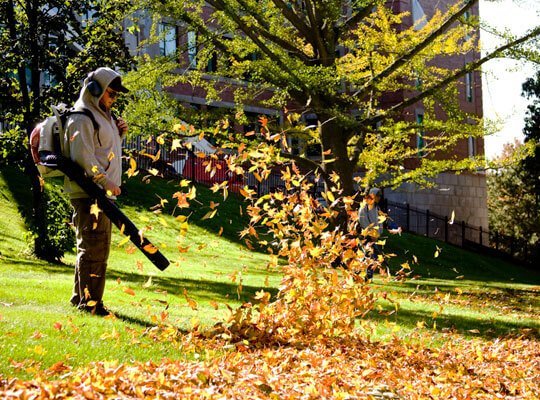Have you ever wondered how tall avocado trees can grow in your backyard? Well, you’re in luck! In this article, we will explore the fascinating world of avocado tree growth and provide you with essential tips to ensure a safe and successful cultivation experience.
Avocado trees, known for their delicious and nutritious fruit, can reach impressive heights. Depending on the variety and growing conditions, these trees can grow as tall as 40 to 80 feet! However, it’s crucial to understand that managing tree height is essential, especially if you have limited space.
We will guide you through the different avocado tree varieties and their growth characteristics, as well as the ideal conditions for their growth. Additionally, we will provide insights into tree pruning and maintenance to help you maintain a safe and manageable height.
So, if you’re ready to embark on a journey into the world of avocado tree cultivation, let’s dive in and discover how to grow these magnificent trees while ensuring your safety and enjoyment.
Quick Summary
- Avocado tree height can range from 40-80 feet depending on variety and conditions.
- Pruning during late winter or early spring promotes healthy growth and controls size.
- Avocado trees require warm climates, well-draining soil, plenty of sunlight, and regular watering.
- Container gardening with dwarf varieties and regular pruning can help manage height in limited spaces.
Avocado Tree Varieties and Their Growth Characteristics
If you’re curious about avocado tree varieties and their growth characteristics, you’ll be pleased to discover the wide range of sizes they can reach. Avocado trees can grow anywhere from 20 to 80 feet tall, depending on the variety and the conditions they’re grown in.
It’s important to manage tree height to ensure the safety of both the tree and those around it. One way to manage the height of avocado trees is through proper pruning techniques. Pruning helps control the tree’s size and shape, as well as promotes healthy growth.
It’s recommended to prune avocado trees during the late winter or early spring when the tree is dormant. Start by removing any dead or damaged branches, as well as any branches that are crossing or rubbing against each other. This will help improve air circulation and reduce the risk of disease.
When pruning, it’s important to make clean cuts just above a bud or lateral branch. Avoid leaving stubs, as they can invite pests and disease. Additionally, be mindful of the overall shape of the tree and aim for a balanced and open canopy.
By managing tree height and using proper pruning techniques, you can help ensure the safety and health of your avocado tree.
Ideal Growing Conditions for Avocado Trees
If you’re planning on growing avocado trees, there are a few key points to consider.
First, avocado trees thrive in warm climates with temperatures between 60 to 85 degrees Fahrenheit.
Second, they require well-draining soil to prevent root rot, so make sure to choose a soil type that allows water to flow freely.
Lastly, avocado trees need plenty of sunlight and regular watering to ensure healthy growth, so be sure to provide them with ample amounts of both.
Climate and temperature requirements
Avocado trees thrive in specific climate conditions and require a certain temperature range to reach their full growth potential. To ensure the safety and success of your avocado tree, it’s important to consider the following:
-
Optimal temperature range: Avocado trees prefer temperatures between 60°F (15°C) to 85°F (29°C). Extreme heat or cold can negatively affect their growth and survival.
-
Consistency is key: Avocado trees require a stable climate with minimal temperature fluctuations. Sudden changes in temperature can stress the tree and inhibit its growth.
-
Climate change impact: With the ongoing climate change and global warming, it’s essential to monitor the local climate conditions. Avocado trees may require additional care and protection to adapt to changing temperatures.
-
Microclimates: Avocado trees can thrive in microclimates that provide some protection from extreme weather conditions. Consider planting your tree near a wall or in a sheltered area to provide some insulation.
By understanding and accommodating the climate and temperature requirements of avocado trees, you can ensure the safety and healthy growth of your tree.
Soil type and drainage considerations
Choosing the right soil type and ensuring proper drainage is crucial for creating an environment that fosters the healthy development of your avocado tree. Avocado trees thrive in well-draining soil with a composition that promotes water retention. The ideal soil for avocado trees is loamy, with a balanced mixture of sand, silt, and clay. This type of soil allows for proper aeration and moisture retention, ensuring that the tree’s roots receive the necessary oxygen and water. To ensure proper drainage, avoid heavy clay soils that can become compacted and hinder water movement. Additionally, incorporating organic matter like compost into the soil can improve its overall structure, enhancing water retention and nutrient availability. Remember, providing the right soil conditions for your avocado tree is essential for its growth and overall health.
| Soil Composition | Water Retention |
|---|---|
| Loamy | Good |
| Sandy | Poor |
| Clay | Poor |
| Compost-enriched | Excellent |
Sunlight and water needs
When it comes to cultivating a healthy avocado tree, understanding its sunlight and water needs is crucial for your success. Here are three important things to keep in mind:
-
Sunlight requirements: Avocado trees thrive in full sun, so make sure to choose a location that receives at least six hours of direct sunlight every day. Avoid planting them in shaded areas or near tall buildings that may block the sun.
-
Watering frequency: Avocado trees have moderate water needs. Water them deeply and thoroughly, allowing the top few inches of soil to dry out between waterings. Overwatering can lead to root rot, so it’s important to maintain proper drainage.
-
Safety precautions: When working with sunlight and water, always protect yourself from harmful UV rays by wearing sunscreen, a hat, and sunglasses. Additionally, be cautious when watering to avoid slipping on wet surfaces. Remember to follow safety guidelines to ensure a successful and safe avocado tree cultivation experience.
Avocado Tree Pruning and Maintenance
Regular pruning is essential for maintaining the health and productivity of your avocado tree. By removing dead or diseased branches, you promote new growth and prevent the spread of infections.
Pruning also helps control the height and shape of the tree, allowing for easier harvesting and maintenance. To ensure proper tree maintenance, remember to prune during the dormant season and follow proper pruning techniques to encourage optimal growth.
Importance of regular pruning
Pruning avocado trees regularly not only promotes healthy growth, but also enhances fruit production. It’s important to understand the benefits of regular pruning and the proper techniques to ensure the safety and success of your avocado tree. Here are three reasons why regular pruning is crucial for your avocado tree:
-
Encourages air circulation: Proper pruning allows for better airflow through the tree, reducing the risk of fungal diseases and pests.
-
Controls tree size: Avocado trees can grow tall and wide, making it challenging to harvest fruits. Regular pruning helps to control the tree’s size, making it easier to manage and harvest the avocados safely.
-
Stimulates new growth: Pruning stimulates the growth of new branches and foliage, leading to a healthier and more productive tree.
By regularly pruning your avocado tree using proper techniques, you can ensure its safety and enjoy an abundant harvest of delicious avocados.
How pruning affects tree height
If you want to keep your avocado tree at a manageable height and ensure its safety, regular pruning is key. Pruning not only helps maintain the overall health and shape of the tree but also directly impacts its height. By employing proper pruning techniques, you can control the height of your avocado tree and prevent it from growing too tall and becoming a safety hazard. Pruning allows you to remove any dead or diseased branches, which can hinder the tree’s growth and increase the risk of falling limbs. Additionally, by selectively pruning certain branches, you can encourage lateral growth and prevent excessive vertical growth. This helps create a more sturdy and compact tree structure, reducing the chances of branches breaking under their own weight. To illustrate the impact of pruning, here is a table showcasing the correlation between pruning techniques and tree height:
| Pruning Technique | Impact on Tree Height |
|---|---|
| Heading Cut | Reduces height |
| Thinning Cut | Controls height |
| Reduction Cut | Decreases height |
| Topping | Limits height |
| Crown Reduction | Manages height |
With these pruning techniques, you can effectively control the height of your avocado tree and ensure its safety for years to come.
Tips for proper tree maintenance
To effectively maintain and care for your tree, it’s essential to follow these tips for proper tree maintenance.
-
Regularly trim your avocado tree to keep it at a manageable height. This will prevent it from growing too tall and becoming a safety hazard.
-
Prune any dead or diseased branches to promote healthy growth and prevent them from falling and causing damage.
-
Utilize techniques such as topping or pollarding to control the height of your avocado tree. This will help maintain a safe and manageable height.
-
Always wear protective gear, such as gloves and goggles, when trimming your tree. Additionally, make sure to use proper tools and equipment to avoid accidents.
Following these tips will ensure that your avocado tree remains at a safe and manageable height while promoting its overall health and well-being.
Avocado Tree Growth Stages
As the avocado tree grows, it goes through different stages of growth. Understanding these stages can help you properly care for and maintain your tree. The growth rate of an avocado tree can vary depending on several factors.
| Stage | Description | Duration | Tips |
|---|---|---|---|
| Seedling | This is the first stage of growth when the tree sprouts from a seed. | 1-2 months | Keep the soil moist but not waterlogged. Provide adequate sunlight. |
| Sapling | During this stage, the tree develops its trunk and branches. | 1-2 years | Protect the tree from extreme temperatures and strong winds. Prune any dead or damaged branches. |
| Juvenile | At this stage, the tree starts producing its first flowers and fruits. | 2-5 years | Provide regular water and fertilization. Protect the tree from pests and diseases. |
| Mature | This is the final stage where the tree reaches its full height and produces abundant fruits. | 5-10 years | Continue regular maintenance, including pruning and fertilization. Harvest the fruits when they are ripe. |
Remember that the height of an avocado tree can be influenced by various factors such as the avocado variety, soil conditions, and climate. Providing proper care and maintenance throughout each growth stage will help ensure a healthy and safe avocado tree.
Managing Avocado Tree Height in Small Spaces
If you’re dealing with limited space, there are techniques you can use to control the height of your avocado tree. You can prune the branches to encourage a more compact growth or use a technique called ‘heading back’ to reduce the overall height.
Another option is container gardening, where you can grow avocado trees in pots, allowing you to easily manage their height and move them around as needed.
Techniques for controlling tree height
One way to control the height of avocado trees is by regularly pruning them. Pruning techniques can help you keep your trees at a manageable height while ensuring their health and safety.
Here are some techniques you can use to control the height of your avocado trees:
-
Crown Reduction: This involves selectively removing larger branches to reduce the overall height of the tree.
-
Heading Cuts: By cutting back the terminal buds of branches, you can encourage lateral growth and control the height.
-
Thinning: Removing some of the branches from the interior of the tree helps improve air circulation and reduces the tree’s density.
-
Training: Using stakes or other support structures can help train the tree to grow in a desired shape and height.
By following these pruning techniques, you can maintain the height of your avocado trees while promoting their overall safety and well-being.
Container gardening for limited spaces
Get ready to experience the joy of growing luscious avocados in even the tiniest of spaces with container gardening. If you have limited space, container gardening is a great option to grow avocado trees.
Here are some container gardening tips to help you maximize vertical space and ensure safety. First, choose a container that’s at least 20 inches wide and 24 inches deep to provide enough room for the tree to grow. Use a well-draining potting mix and place the container in a sunny spot.
To maximize vertical space, consider using trellises or stakes to train the tree to grow upward. Regularly prune the tree to control its height and promote a bushier growth. Remember to water the tree regularly, but avoid overwatering to prevent root rot.
With these container gardening tips, you can enjoy growing avocados even in limited spaces.
Are Avocado Trees Similar in Height to Palm Trees?
Avocado trees and palm trees do not share similar heights. While avocado trees typically range between 30 and 40 feet tall, palm trees can vary significantly in height. The keyword palm tree height information sheds light on the disparity in size between these two tree species.
Potential Challenges and Solutions for Avocado Tree Height
Avocado tree height can pose potential challenges, but there are solutions available to overcome them. When managing the height of your avocado tree, it’s important to consider safety as a top priority.
Pruning techniques can help you control the growth and prevent the tree from becoming too tall for your space. Regular pruning is essential to keep your avocado tree at a manageable height. Start by removing any dead or damaged branches, as they can hinder the tree’s overall growth. Next, focus on thinning out the tree by cutting back branches that are growing too densely. This allows for better air circulation and sunlight penetration, promoting healthy growth.
To prevent your avocado tree from reaching excessive heights, you can also utilize dwarf or semi-dwarf varieties. These types of trees naturally stay smaller in size, making them more suitable for container gardening or limited spaces. Additionally, you can consider using a trellis or support system to train the tree to grow horizontally rather than vertically.
Remember, safety should always be a priority when managing avocado tree height. Follow proper pruning techniques and consider the use of dwarf or semi-dwarf varieties to ensure a safe and manageable tree for your limited space.
How to Measure the Height of an Avocado Tree
Measuring the height of an avocado tree is a simple process that allows you to keep track of its growth and ensure proper care. By using the right measuring tools and understanding tree growth patterns, you can accurately determine the height of your avocado tree. Here are four important steps to follow:
-
Choose the right measuring tools: To measure the height of your avocado tree, you’ll need a measuring tape or a measuring stick. Make sure it’s long enough to reach the top of the tree.
-
Stand at a safe distance: Find a spot where you can see the entire tree without any obstructions. It’s important to stand at a safe distance to avoid any potential hazards.
-
Measure from the ground: Start measuring from the base of the tree. Hold the measuring tape or stick straight up and align it with the trunk. Measure all the way up to the highest point of the tree.
-
Take multiple measurements: To ensure accuracy, it’s recommended to take measurements from different angles. This’ll give you a more comprehensive understanding of the tree’s height.
By following these steps and regularly measuring the height of your avocado tree, you can monitor its growth and make informed decisions about its care and maintenance.
Famous Avocado Tree Records and Stories
Did you know that there are fascinating stories and records associated with famous avocado trees? Avocado trees have captured the attention of many enthusiasts and there are some incredible records that have been set. One notable story is about the tallest avocado tree ever recorded, which stood at an astonishing height of 80 feet tall! This giant tree was a testament to the successful cultivation techniques and pruning methods employed by its caretaker.
In addition to the achievements in height, avocado trees have also found a place in small spaces through container gardening. Managing the height of avocado trees in limited areas can pose challenges, but there are solutions available. One approach is regular pruning to control growth and maintain a manageable size. Another option is to choose dwarf or semi-dwarf avocado tree varieties that naturally have a smaller stature.
To help you understand the challenges and solutions of managing avocado tree height, here is a table that highlights some important points:
| Challenge | Solution |
|---|---|
| Limited space | Container gardening |
| Excessive height | Regular pruning |
| Desire for smaller trees | Choose dwarf or semi-dwarf varieties |
By following these cultivation techniques, pruning methods, and exploring container gardening, you can successfully manage the height of your avocado trees, even in small spaces. So go ahead and start measuring your tree’s height, and enjoy the beauty and benefits of these remarkable trees.
Frequently Asked Questions
What are the different varieties of avocado trees and how do they differ in terms of height?
Avocado trees come in various varieties with different taste profiles. Some popular ones include Hass, Fuerte, and Reed. Each variety has its advantages and disadvantages when it comes to growing in different climates.
What are the recommended temperature and humidity levels for optimal avocado tree growth?
To ensure optimal avocado tree growth, it’s important to maintain recommended temperature and humidity levels. These factors greatly affect the health and development of avocado trees. Proper conditions promote safety and encourage the tree’s growth.
How often should avocado trees be pruned and what are the best pruning techniques?
To ensure safety and optimal growth, prune avocado trees regularly. Pruning frequency depends on the tree’s age and condition, but generally, it’s recommended to prune every 1-2 years. When pruning, use sharp and clean tools, removing dead or diseased branches.
What are the different growth stages of an avocado tree and how long does it take to reach each stage?
Avocado trees go through different growth stages, taking 2-3 years to reach maturity. The average growth rate varies based on climate, with factors like temperature, sunlight, soil quality, and water availability affecting growth at each stage.
What are some creative ways to manage the height of avocado trees in small spaces, such as urban gardens or balconies?
For container gardening, choose dwarf avocado tree varieties that grow up to 10 feet tall. Prune regularly to manage height and promote bushy growth. For vertical gardening, use trellises or espalier techniques to support avocado trees and maximize space in urban environments.
Conclusion
So, if you’re considering growing avocado trees, it’s important to understand their growth characteristics and ideal growing conditions.
Pruning and maintenance are key to managing their height, especially in small spaces.
Remember to measure the height of your avocado tree to keep track of its growth.
And if you’re feeling ambitious, strive to break some famous avocado tree records!
With proper care and attention, your avocado tree can reach impressive heights and provide you with delicious fruits for years to come.
Happy growing!









